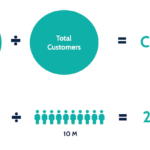An employee engagement strategy is a business tactic that ensures all employees in an organisation are motivated to perform to the best of their abilities on a daily basis by establishing the circumstances required for this to occur.
It is essential for employees to be committed to the fundamental principles and long-term objectives of their organisation. They need to have a better comprehension of their own self-worth in order to be inspired and motivated to make valuable contributions to the accomplishment of the organisation’s goals.
Confidence, coherence, dedication, and communication on both the part of the organisation and its employees are essential building blocks for employee engagement.
The term “engagement” refers to a strategy that boosts performance, productivity, and individual well-being in the workplace in order to make the most of the potential presented by a prosperous organisation. It is possible to measure it. It ranges from unremarkable to excellent in quality. Fostering and increasing participation can be done to a significant degree.
1. Regular team meetings
The pursuit of meaning in one’s professional life is contagious and brings members of a team closer together. There is a significant amount of work pressure in that manner.
The leaders of the organisation are responsible for convening team meetings at predetermined intervals so that the organisation’s short-term and long-term objectives can be discussed.
It is crucial to make sure that the tasks are matched with the goals and objectives of the organisation in order to establish a culture at work that is engaging and interesting to its employees.
Employees can more easily relate to the purpose of their work when they have a better understanding of how their specific responsibilities fit into the overall goals of the firm.
2. One-on-one discussions
Have regular conversations with your staff members to go through the plans for the results and the opportunities for further improvements. Make it possible for your workers to have some sort of input into the decisions that are made, even if it’s just an advisory role.
You are not required to take continual feedback inconclusively; nonetheless, the simple fact that it is sometimes also vital to listen to your staff and the ideas they have should be sufficient to persuade you to do so.
This interaction is productive and positive. Aim to create a setting that is emotionally safe and one in which different points of view are embraced and valued.
3. Put the best ones to the test
Leaders can motivate their top performers by providing them with more interesting jobs than the others, such as inter-divisional positions or supervisory responsibilities.
This will encourage them to work harder. This will not only give them the opportunity to broaden their range of talents and abilities and significantly boost their levels of motivation, but it will also prepare them to assist in making the business successful.
4. Diagnosis and Treatment
Several studies have been carried out to investigate the ways in which an employee’s level of engagement can affect their levels of motivation. In order to accomplish this, leaders need to determine the root of the issue, which is the cause behind disengagement.
When it comes to managing people, this is where high-quality performance management software comes into play. The leader needs to identify the issue by employing a strategy that involves trial and error, and then decide what course of action is most beneficial for each employee.
When you’re in a leadership position, it can be challenging to deal with colleagues who have a negative outlook on their jobs, especially when there’s nothing you can do to improve their level of competency.
5. I care about my team!
Be as forthright and honest as possible. Be straightforward with them and bring up topics that are not directly related to the business at hand.
After you have developed that personal relationship with your staff members, you are now in a position to provide them with your sincere feedback regarding the task that they are responsible for.
You will earn their faith in you while simultaneously demonstrating that you care about them by doing so. You can even use some best employee recognition tool available in the market to recognize your team members.
6. Bring the team together and remind them that “United We Stand.”
Since Jack never plays and constantly works, he is a bored child. How about not limiting conversations to simply those that take place during work-related gatherings and roundtables?
Participate in certain group activities like picnics, hiking, luncheons, community service, and other similar activities. This is a wonderful activity, and it brings people together. A vital component of engagement is ensuring that they remain deeply ingrained in the organisation.
7. Gratitude- Great Attitude
After they have finished their work, it is important to acknowledge your personnel. Even something as basic as “Way to go, man!” would be plenty. “You did a fantastic job, buddy!” Nobody likes to be taken for granted.
Employees constantly require that acknowledgement for the work that they do. Therefore, these acts of generosity have the potential to go a very long way. Concise, time-bound, spontaneous, accurate, and dependable expressions of appreciation are among the most productive types of gratitude.
Saying “thank you” to colleagues will make them feel recognised, which will help maintain healthy relationships in the workplace and will also rejuvenate those ties.
Conclusion
It is up to you to ensure that the roles that your employees play inside your organisation are ones in which they are recognised, appreciated, and given the authority to make decisions.
The health and prosperity of an organisation are directly correlated to the level of employee engagement that exists within that organisation.







